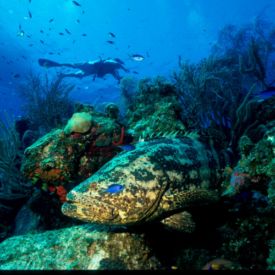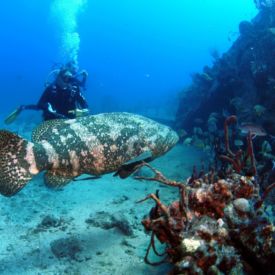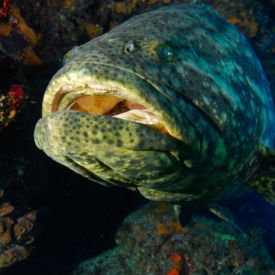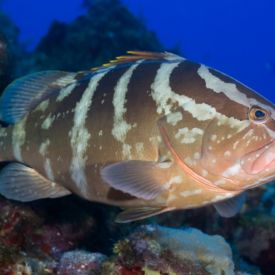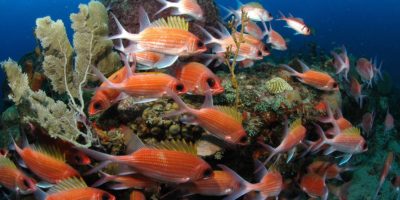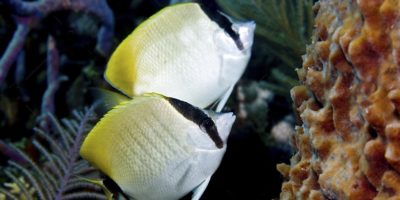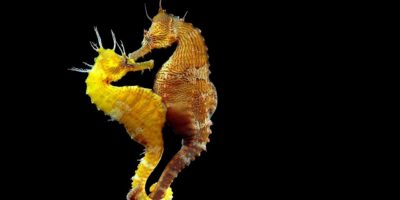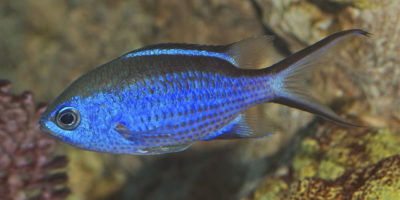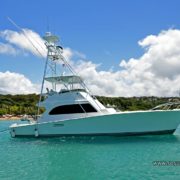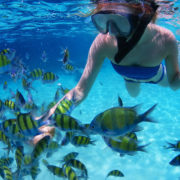Epinephelus Itajara, better known as the Atlantic Goliath Grouper, is a large saltwater fish famous among divers, as it is considered a diving “buddy” which shows no fear of humans, moves slowly and is, very curious. Some of the best underwater photography shows these giants up close to divers and snorkelers. Caution is advised when facing the larger adults of this species. Sosua Beach divers have seen these groupers in the bay and near the reefs, usually juveniles.
PHOTO GALLERY
Size, Weight & Range
It is found in shallow tropical waters among reefs and corals in the Florida Keys, most of the Caribbean, the Bahamas, and coastal Brazil ( also in Congo and Senegal ). These fish may grow to up to eight feet (2 .5 meters ) and weight up to 800 pounds. It is considered the largest grouper in the Western hemisphere. This makes them a target for anglers and spear fishermen, specially because they fear no humans and move slowly.
Goliath Grouper Reproduction
Goliath Groupers are considered protogynous hermaphrodites, organisms, female at birth and male later in life. This is natural in most groupers, not yet official for the Goliath. Individuals can travel 100 miles to spawn, and sexual maturity is reached at 4-6 years for males; 6-8 years for females. Spawning aggregations of up to 100 of these giants have been recorded. They can live up to 37 years and can tolerate low oxygen levels. Its age can be measured using annual growth rings in its dorsal fin rays.
Critically Endangered Species
The fish nearly disappeared during the 1970s. Fishing and shrinking mangroves drove down numbers dramatically, so fewer were seen near reefs. A ban was put in place 2 decades ago to stop the rapid population decline, specially in the USA and the Caribbean. Slow growth, low reproductive rate, spawning behavior, red tides and other environmental issues have also contributed to its decline. The last 30 years have seen an 80% population decline of this species.
Lion Fish Natural Control
Grouper helps us to get rid of the invasive Lion fish, which is an invasive species that has quickly spread in many oceans and cause damaging effects to many fish populations.
ON VIDEO: GROUPER EATS LION FISH
To see these fish in their natural habitat, contact one of the diving centers in Sosua Beach and ask them about diving locations where these giants can be found.
Bibliography and Sources:
- Red tide killed groupers in Florida
- Atlantic Goliath Grouper – Oceana
- Ban on Goliath Grouper Fishing
- Facts on Goliath Grouper – SportDiver
- Florida Museum: Epinephelus Itajara
- National Geographic – Goliath Grouper


